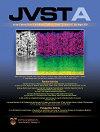x射线光电子能谱结合能位移的化学意义:一个视角
IF 2.1
3区 材料科学
Q3 MATERIALS SCIENCE, COATINGS & FILMS
引用次数: 0
摘要
本展望的主要目的是回顾在x射线光电子能谱(XPS)测量中观察到的结合能(ΔBE)转移的机制,并将转移与所研究系统中的电子结构和化学键联系起来。为了实现这一目标,除了计算XPS BEs之外,还需要考虑几个理论问题。虽然在这里进行了简要讨论,但我们主要对BE的绝对值或使用相对强度的定量不感兴趣。在分子轨道(MO)理论框架内,轨道性质的分析对XPS的正确解释至关重要。特别地,给出了初始状态和最终状态对BE和BE位移的贡献的严格定义,ΔBE。通过考虑模型原子系统的能谱,首先说明了核心能级的能谱与电子结构的关系,从而建立了能谱位移的起源和大小。然后,将为模型系统建立的机制应用于一组实际实例的XPS测量和MO理论的回顾。本文的一个重要重点是证明,在许多情况下,初始状态机制允许对XPS BE转移进行明确的解释,理论的重要作用是提供定性解释,而不是与XPS测量结果的定量一致。所建立的机制是解释XPS测量值的指南,考虑这些机制可能会提出有用的额外计算。结果表明,从头算MO理论与XPS测量的耦合仍有广阔的发展前景。本文章由计算机程序翻译,如有差异,请以英文原文为准。
Chemical significance of x-ray photoelectron spectroscopy binding energy shifts: A Perspective
The principal intent of this Perspective is to review the mechanisms that are responsible for the shifts of binding energies, ΔBE, observed in x-ray photoelectron spectroscopy (XPS) measurements and so to relate the shifts to the electronic structure and the chemical bonding in the systems studied. To achieve this goal, several theoretical considerations are necessary beyond just the calculation of XPS BEs. Though briefly discussed here, we are not primarily interested in absolute values of BE or quantitation using relative intensities. Within the molecular orbital (MO) theory framework, it is shown that the analysis of orbital properties is critical for the correct interpretation of XPS. In particular, rigorous definitions are given for the initial state and final state contributions to BEs and to BE shifts, ΔBE. It is first shown how the BEs of core levels are related to the electronic structure by consideration of the BEs for a model atomic system to establish the origins and magnitudes of BE shifts. The mechanisms established for the model system are then applied to a review of XPS measurements and MO theory on a set of real examples. An important focus of the paper is to demonstrate that, in many cases, initial state mechanisms allow for a definitive interpretation of the XPS BE shifts and that an important role of theory is to provide qualitative explanations rather than quantitative agreement with XPS measurements. The mechanisms established are a guide to the interpretation of XPS measurements and consideration of these mechanisms may suggest additional calculations that would be useful. It is concluded that there is still a bright future for the coupling of ab initio MO theory with XPS measurements.
求助全文
通过发布文献求助,成功后即可免费获取论文全文。
去求助
来源期刊

Journal of Vacuum Science & Technology A
工程技术-材料科学:膜
CiteScore
5.10
自引率
10.30%
发文量
247
审稿时长
2.1 months
期刊介绍:
Journal of Vacuum Science & Technology A publishes reports of original research, letters, and review articles that focus on fundamental scientific understanding of interfaces, surfaces, plasmas and thin films and on using this understanding to advance the state-of-the-art in various technological applications.
 求助内容:
求助内容: 应助结果提醒方式:
应助结果提醒方式:


